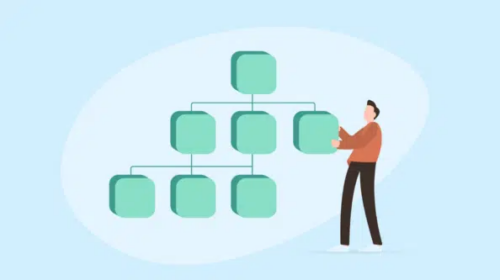Non-stop updates: SEOs share the impact on their day-to-day, work-life balance and career outlook
Stakeholder expectations seem more realistic as the industry has matured, but Google’s updates may be influencing career paths.
The heightened frequency of updates this year may intensify that experience, which means that SEOs might also be under more pressure to identify issues and implement solutions. But, there are many types of SEOs working across different verticals as well as at agencies and in-house, and their respective experiences vary.
To provide a comprehensive picture of what it’s like to work in this environment, five SEOs have shared how their workload changes after updates rollout, how their clients might respond, along with how this year’s updates have changed their work-life balance and career outlook.
How a site performs after an update influences the work ahead
Algorithm updates are inevitable and the days and weeks following one can be thrilling when the hard work pays off, or potentially devastating if rankings suddenly tank. The high-stakes nature of these updates means that, after the dust settles, workloads can vary greatly from brand to brand and SEO to SEO.
“We’re definitely busier after an algorithm update,” said Chris Long, VP of marketing at Go Fish Digital. “We need to communicate that information to the client and share any data on how that impacted their site,” he added, “In terms of strategy, we like to keep the same course of action but sometimes algorithm updates shift some priorities around.”
“Some sites, like DTC [direct to consumer] businesses are particularly sensitive to algorithm updates and may see big changes to revenue around this time,” Crystal Carter, senior digital strategist at Optix Solutions, said, noting that it’s important to have a clear understanding of how the site has been impacted as well as recommendations for the next steps. “This can take time to put together, so there is generally an increase in monitoring and reporting following an update,” she said.
As with any career that involves working with clients, the demands of the job will vary depending on the client’s needs and expertise with the subject matter. “For contacts who are extremely knowledgeable and up to date on industry news, they may require a deep dive analysis into how the site was impacted by the update,” Jason Melman, senior director of SEO and analytics at Inseev Interactive, said.
SEOs that work in-house may have a different experience after a Google update since they work for one brand (as opposed to several clients). “Unless the algorithm update hits us very badly, the workload doesn’t increase, but instead gets shifted,” Masaki Okazawa, technical SEO product manager at SimpleTire, said, “My team and I start monitoring for shifts in organic traffic to identify risk areas. From there, we update our roadmap to accommodate if needed.”
“I think that a Google update should never make SEO people crazy,” Veruska Anconitano, SEO and language manager at Canva, said. Anconitano views Google Search updates as an opportunity to reassess her site’s visibility and to create a checklist of improvements.
“I tend not to look at the data as soon as a new update comes out,” she said, highlighting that updates often take more than a week to finish rolling out. “My workload doesn’t change that much; what changes is the analysis of the data to try to understand if a drop or an improvement is related to the update or to not tackle it,” she added.
Be prepared to explain updates to stakeholders
Changes in traffic and rankings after an update might be well received or, on the drastic end, throw stakeholders into damage control mode. “Good news is good,” Carter said, “It’s reaffirming to the hard work that has been invested in the site and can help to build more stakeholder buy-in.”
On the other hand, “When things don’t go to plan, SEOs who may normally report to a single contact within the business may need to provide a wider context to higher-ups, like the board of directors,” she added, “This is not unusual so hold your nerve. In these conversations, there is value in demonstrating how SEO directly correlates to business objectives and how you, as an SEO, can provide context to the wider search landscape.”
“Even if [the client] hasn’t benefited from the update, they often understand that Google’s algorithm isn’t perfect and that the approach we’re taking is setting them up well for the long-term,” Long said, “Sometimes it helps to talk about our perspective on updates before they happen. That way, we’re on the same page when they inevitably happen.” Stakeholders may also be interested in how their competition was affected by the update as well, he added.
Some clients will want a simple explanation of the update (e.g., what kinds of sites it affected, what aspects of a site it emphasized, etc). “Sometimes the client needs to disseminate information to internal teams to keep everyone at the company informed,” Melman said, “In these cases, we will often help put together a PowerPoint for them to share with their teams.”
Although stakeholders may want a straightforward overview of an update, that’s not always possible. Some updates are much broader than others: Google’s core updates are wide and cover many aspects of a site. Product reviews updates, on the other hand, are much more narrow and impact e-commerce-related content. For sites that have taken a visibility dip after a core update, Google has provided some advice on recovering, but figuring out what pieces of advice are most applicable to your site (and then prioritizing them) can be a process of trial and error.
Whether in-house or at an agency, it’s an SEO’s duty to contextualize updates and shifts in rankings and/or traffic to stakeholders. “Rather than responding to Google updates, stakeholders generally want to know the big picture: why the traffic dropped, why it improved, why a specific page is doing well or worse in terms of conversions, etc.” Anconitano said.
Work-life balance can be an issue, but SEOs aren’t ‘saving lives’
When a site’s visibility improves, you can “Pat yourself on the back and keep on keeping on,” Carter said. But, “Challenging results can be stressful when clients are feeling the pinch,” she added, “If you need to pause scheduled activity to respond to an update then let the client know that you are adjusting your plans. If a client would like more regular check-ins, then setting a schedule can help everyone focus.”
“I’ve had stakeholders ask our team to create a traffic recovery plan within 72 hours of an algorithm update,” Okazawa, who also has experience working at an agency, said, “This definitely adds a lot of stress for the team and I’ve personally had nights just tapping into all of my SEO knowledge in order to find an appropriate solution to the issue.”
“While it’s generally busier for us and more work during the days, it hasn’t impacted my work-life balance too much,” Long said. Anconitano, who works in-house, shared a similar sentiment: “Overall, unless there’s a huge emergency, my work-life balance stays the same… at the end of the day, I’m not saving lives.”
There have been a lot of updates this year; how has that affected your outlook on SEO as your career?
Although Google rolls out thousands of updates a year, only a handful are impactful enough to get announced. This year, SEOs experienced more announced updates than they have in the recent past; below is a list of updates from the last half of 2021.
Core updates:
Non-core updates:
- June 23rd spam update
- June 28 spam update
- July link spam update
- Page Experience update
- November 2021 spam update
- November 2021 local search update
- December 2021 product reviews update
The unusual frequency of these updates can result in a variety of challenges, such as more requests from clients or greater difficulty in isolating the impact of specific updates, for example.
The updates, themselves, may also be shaping SEO career paths: “The SERPs and updates are becoming more niche-targeted as Google works to keep pace with user needs,” Carter said, adding, “I see more of a need for SEO specialization in particular aspects of search rather than being expected to do it all. E-commerce SEO is different from content SEO, is different from local SEO — and you can drill down further from there. Specializing helps you to keep on top of your requirements and implement them effectively.”
“Recently there seems to be a shift towards more niche sites having an even harder time competing against the big names,” Melman said, “While many SEOs may see this as unfair or frustrating, I personally enjoy the challenge and find it rewarding to figure out how to overcome these challenges and still win top positions for our clients.”
The fast pace of change makes it an exciting time to be in SEO, “but it can be difficult to want to keep it as a long-term career,” Okazawa said, “What I’ve done as a safety net is develop my soft skills like project management and road mapping so that I can make a transition into product management if I ever decide SEO doesn’t cut it for me.”
“You just learn to expect them and know they’re coming,” Long said of Google updates, “I think that helps me stay focused on long-term solutions that will make it more likely clients benefit from updates. If you know what the algorithm updates are looking to reward, you need to fold that into your overall strategy.”
Despite some volatility, SEOs still have a north star to guide them
The goal of search engines is to provide users with the best possible experience, which is what brands should be focusing on as well. The overlap means that, regardless of what updates may come, SEOs always have a north star to guide them.
“I see the Google updates as a way to emphasize that the purpose of SEO is to serve users and move away from the idea that ‘ranking and traffic is everything,’” Anconitano said, noting that ROI and conversions are more significant business metrics. “The only way to generate conversions is to serve users well. Being first in Google helps, but being relevant matters more than anything else, both in Google’s and users’ eyes,” she said.





